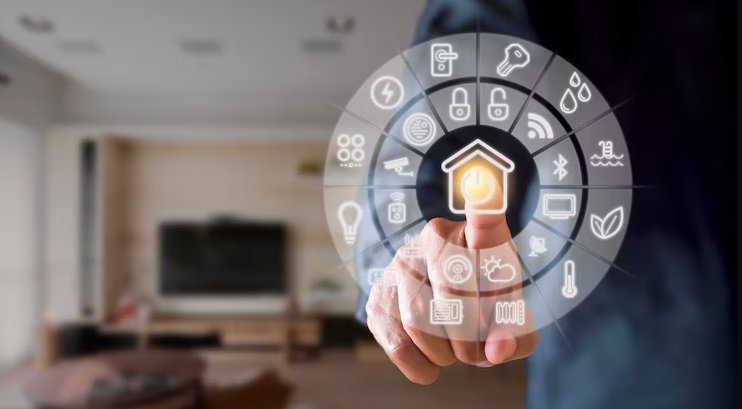
In today’s digital age, technology continues to advance at an unprecedented rate, transforming various aspects of our lives. One such area is the integration of virtual assistants and connected homes, revolutionizing the way we interact with our living spaces. In this article, we will explore the latest advancements in virtual assistant technologies and the concept of the connected home, highlighting their benefits and potential applications.
Virtual Assistants: Enhancing Daily Life
Virtual assistants, powered by artificial intelligence (AI) and natural language processing (NLP), have become increasingly prevalent in our homes. These voice-activated assistants, such as Amazon’s Alexa, Google Assistant, and Apple’s Siri, offer a range of functionalities and services. From answering questions and setting reminders to playing music and controlling smart devices, virtual assistants have become integral parts of our daily lives.
With voice recognition technology continually improving, virtual assistants can accurately understand and respond to natural language commands. This seamless interaction allows users to control various smart devices, including thermostats, lights, locks, and even kitchen appliances, with just their voice. Virtual assistants also offer personalized experiences, adapting to user preferences and providing tailored recommendations based on their habits and routines.
The convenience of virtual assistants extends beyond basic tasks. They can provide weather updates, read the news, schedule appointments, and even order groceries. These AI-powered assistants constantly evolve and improve, gaining new capabilities through software updates. They act as intelligent companions, simplifying our lives and saving us time and effort.
The Connected Home: A New Level of Automation
The concept of the connected home, also known as the smart home, involves integrating various devices and appliances to create an interconnected ecosystem. These devices communicate with each other through wireless technologies, such as Wi-Fi and Bluetooth, enabling homeowners to control and monitor their homes remotely. The connected home offers a new level of automation, convenience, and energy efficiency.
Connected homes feature a wide range of smart devices, including smart thermostats, lighting systems, security cameras, door locks, and entertainment systems. These devices can be controlled individually or through a central hub, often connected to a virtual assistant. For example, users can adjust the temperature, dim the lights, and lock the doors using voice commands or smartphone apps.
Smart thermostats play a crucial role in energy efficiency. They learn user preferences and adjust temperature settings accordingly, optimizing energy consumption. With remote access, users can control their thermostats from anywhere, ensuring energy savings when they are away from home. In addition, smart lighting systems utilize LED bulbs and allow users to control brightness, color, and schedules, reducing energy waste.
Connected homes also enhance security and safety. Smart security systems integrate cameras, motion sensors, and door/window sensors to provide comprehensive surveillance and real-time monitoring. Homeowners can receive instant alerts on their smartphones in case of any suspicious activity or breaches, allowing for quick response and peace of mind. Connected smoke detectors and carbon monoxide detectors can send alerts in case of emergencies, potentially saving lives.
Home Entertainment and Lifestyle Management
Connected homes offer a wealth of entertainment options and lifestyle management features. Users can stream music, movies, and TV shows directly from their connected devices or through voice commands to virtual assistants. Smart TVs and speakers provide immersive audio-visual experiences, transforming living rooms into mini theaters.
Virtual assistants can also assist with home automation routines. By creating customized routines, users can synchronize multiple smart devices to perform specific actions simultaneously. For instance, a “Good Morning” routine can gradually turn on the lights, adjust the thermostat, and play favorite music to help start the day.
Moreover, connected homes enable better time and resource management. Smart appliances, such as washing machines and refrigerators, can notify users about maintenance needs or when supplies are running low. They can even automate the ordering process, ensuring a constant supply of essentials. This level of convenience simplifies household management and frees up time for other activities.
Future Outlook and Challenges
As technology continues to evolve, the possibilities for virtual assistants and connected homes are vast. The integration of AI, machine learning, and predictive analytics will further enhance the capabilities of virtual assistants, enabling them to anticipate user needs and provide proactive suggestions. The ecosystem of smart devices will continue to expand, with advancements in areas like healthcare, entertainment, and home automation.
However, the widespread adoption of virtual assistants and connected homes also poses challenges. Privacy and data security concerns are crucial considerations, as these technologies collect and process sensitive personal information. It is essential for manufacturers and service providers to prioritize robust security measures and transparent data practices to ensure user trust and protect against potential vulnerabilities.
Additionally, interoperability and compatibility issues among different brands and platforms can hinder the seamless integration of smart devices. Standards and protocols need to be established to promote a cohesive ecosystem where devices from different manufacturers can communicate and work together effectively.
Conclusion
The rise of virtual assistants and connected homes has ushered in a new era of smart technologies, offering convenience, efficiency, and enhanced living experiences. Virtual assistants have become indispensable companions, providing personalized assistance and controlling an array of smart devices. The connected home brings automation, security, and energy efficiency to our fingertips, making our lives more comfortable and sustainable.
As these technologies continue to advance, it is important for users to stay informed about the latest developments and choose products and services that prioritize privacy and security. By embracing virtual assistants and connected homes, we can unlock the full potential of smart technologies and create homes that are not only intelligent but also safe, sustainable, and harmonious with our modern lifestyles. With the continued evolution of virtual assistants and the growth of the connected